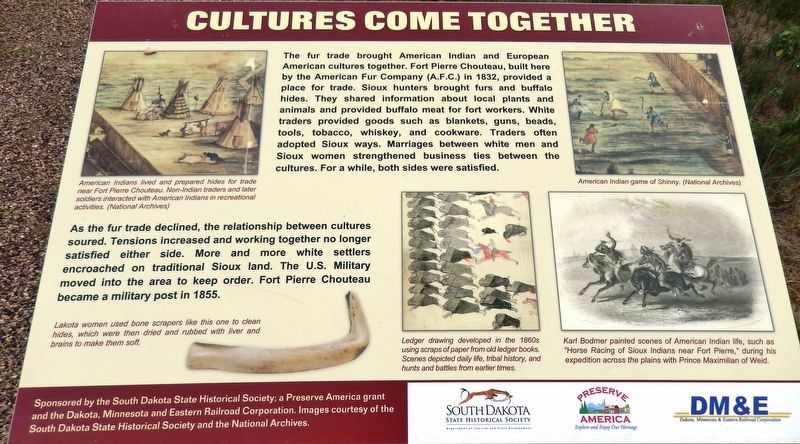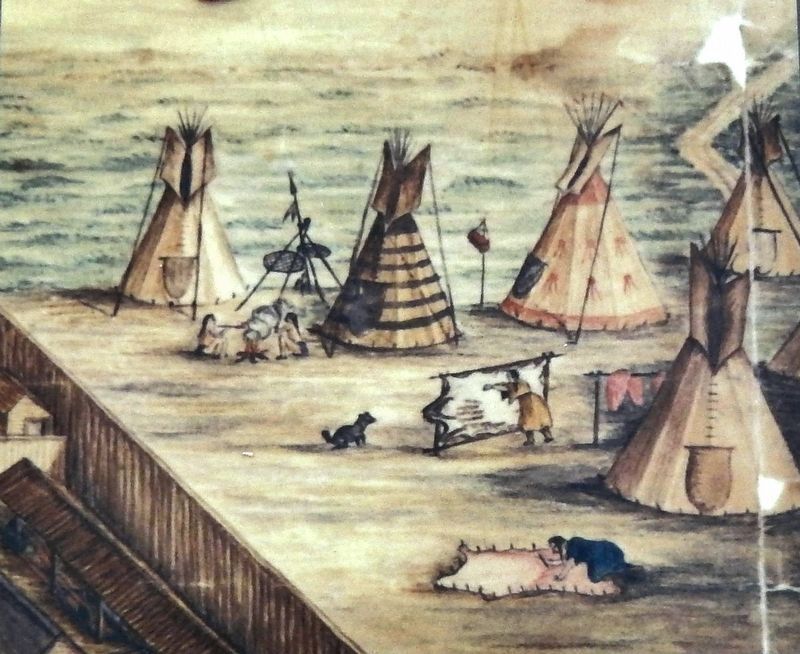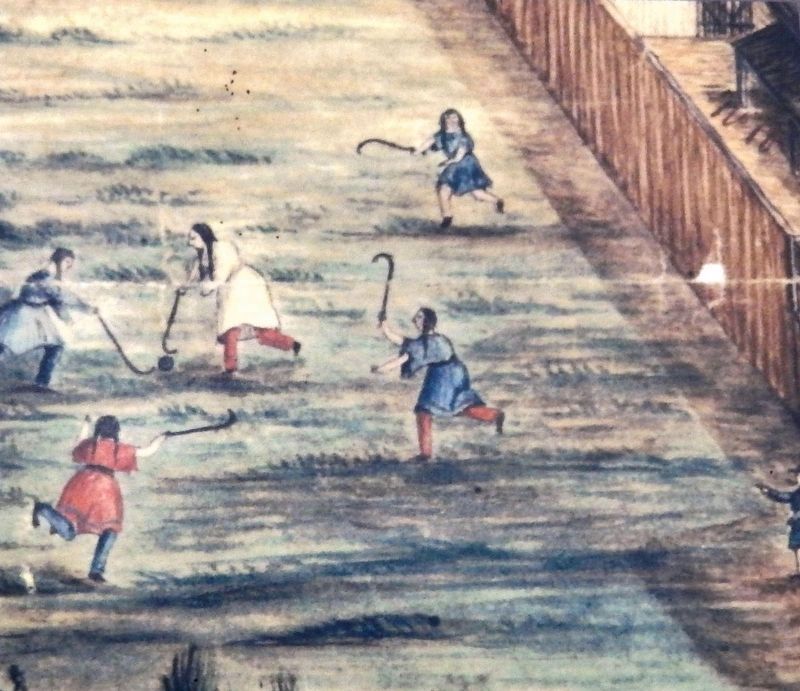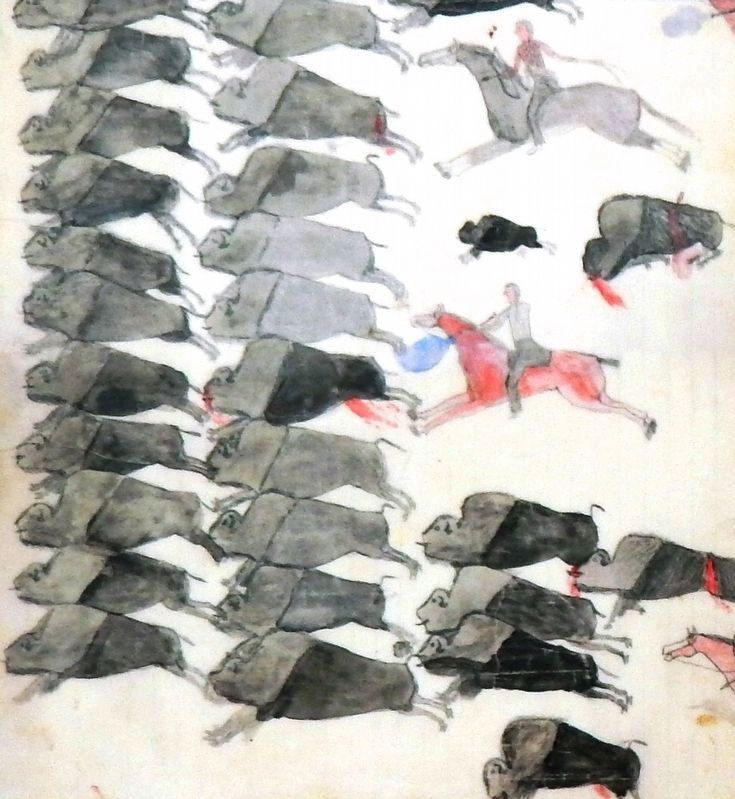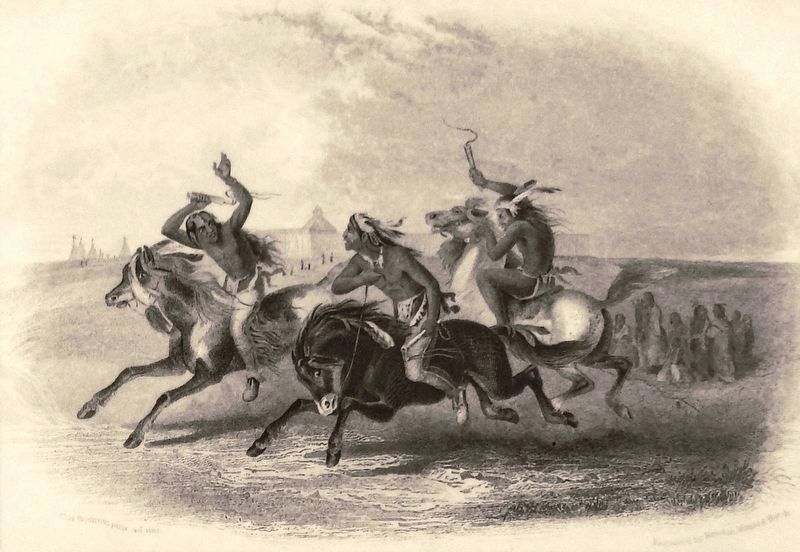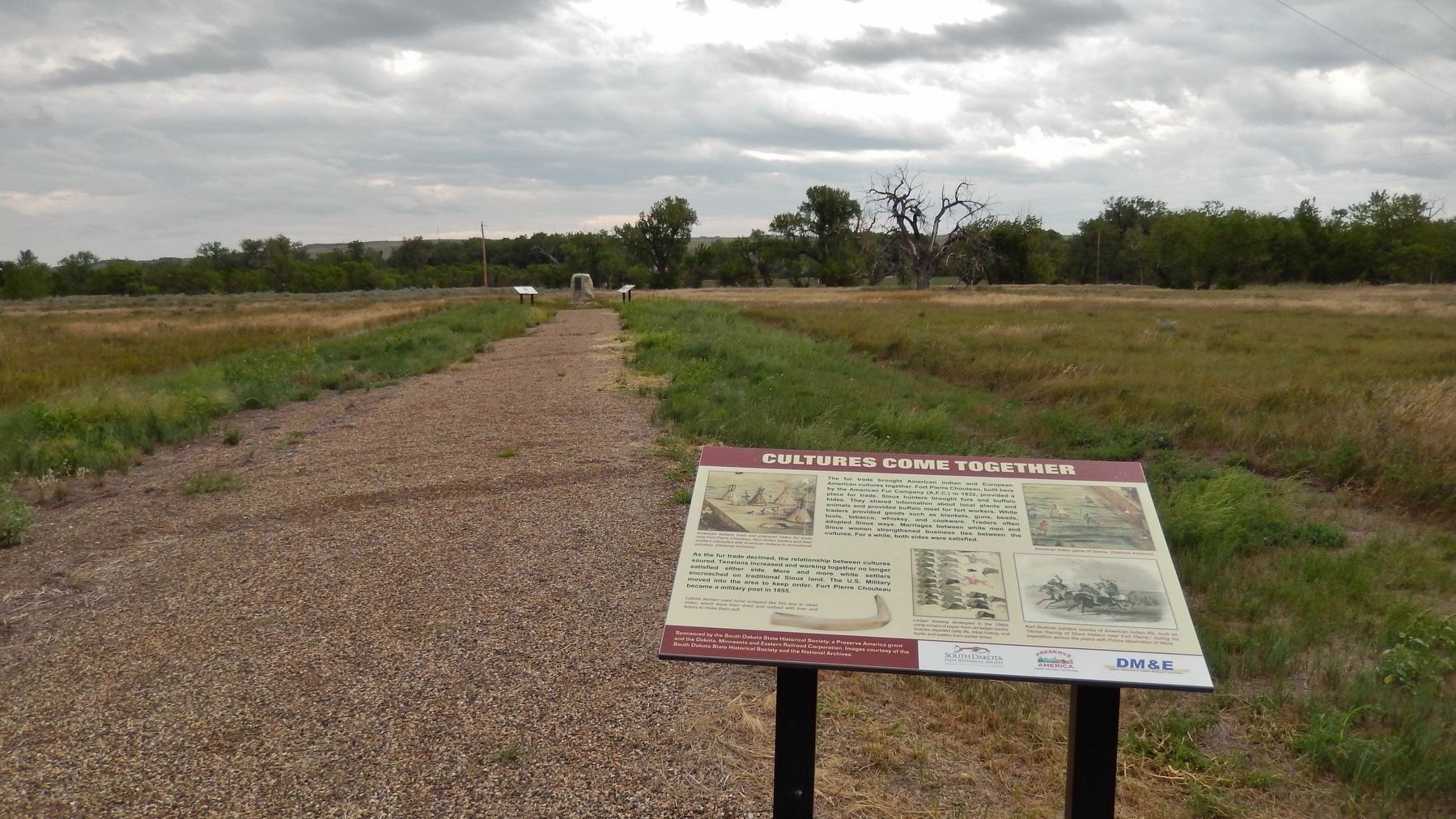Fort Pierre in Stanley County, South Dakota — The American Midwest (Upper Plains)
Cultures Come Together
As the fur trade declined, the relationship between cultures soured. Tensions increased and working together no longer satisfied either side. More and more white settlers encroached on traditional Sioux land. The U.S. Military moved into the area to keep order. Fort Pierre Chouteau became a military post in 1855.
Images courtesy of the South Dakota Historical Society and the National Archives.
Erected by The South Dakota State Historical Society, a Preserve America grant and the Dakota, Minnesota and Eastern Railroad Corporation.
Topics. This historical marker is listed in these topic lists: Forts and Castles • Industry & Commerce • Native Americans • Settlements & Settlers.
Location. 44° 23.432′ N, 100° 23.285′ W. Marker is in Fort Pierre, South Dakota, in Stanley County. Marker can be reached from Fort Chouteau Road, 0.3 miles east of State Highway 1806 when traveling east. Marker is located on the grounds of the Fort Pierre Chouteau National Historic Landmark, on the south side of the walking trail from Fort Chouteau Road. Touch for map. Marker is at or near this postal address: 350 Fort Chouteau Road, Fort Pierre SD 57532, United States of America. Touch for directions.
Other nearby markers. At least 8 other markers are within walking distance of this marker. Fort Pierre Chouteau Site (within shouting distance of this marker); Archaeology at Fort Pierre Chouteau (within shouting distance of this marker); Fort Pierre Chouteau: Military Occupancy (1855-1857) (within shouting distance of this marker); Fort Pierre Chouteau: Fur Trade (1832-1855) (within shouting distance of this marker); Fort Pierre Choteau Trading Post (within shouting distance of this marker); Fur Trade on the Upper Missouri River (about 300 feet away, measured in a direct line); Rivers and Trails
(about 400 feet away); Scotty Philip and his Buffalo Ranch (about 400 feet away). Touch for a list and map of all markers in Fort Pierre.
More about this marker. Marker is a large composite plaque, mounted horizontally on waist-high metal posts.
Related markers. Click here for a list of markers that are related to this marker. Fort Pierre Chouteau National Historic Landmark
Also see . . . Fort Pierre Chouteau, South Dakota – Largest Trading Post on the Great Plains. During its active years, the post received, processed, and shipped hundreds of thousands of beaver pelts, deer skins, and buffalo hides destined for European and eastern markets. Through Fort Pierre Chouteau and its subsidiary trading posts, the Plains Indians found their primary contact with Euro-Americans. A new-found prosperity followed that led the American Indians to accept, for a time, the white man’s encroachment on the Plains. (Submitted on October 10, 2018, by Cosmos Mariner of Cape Canaveral, Florida.)
Credits. This page was last revised on October 10, 2018. It was originally submitted on October 7, 2018, by Cosmos Mariner of Cape Canaveral, Florida. This page has been viewed 128 times since then and 17 times this year. Photos: 1, 2, 3, 4, 5, 6. submitted on October 10, 2018, by Cosmos Mariner of Cape Canaveral, Florida. • Bill Pfingsten was the editor who published this page.
